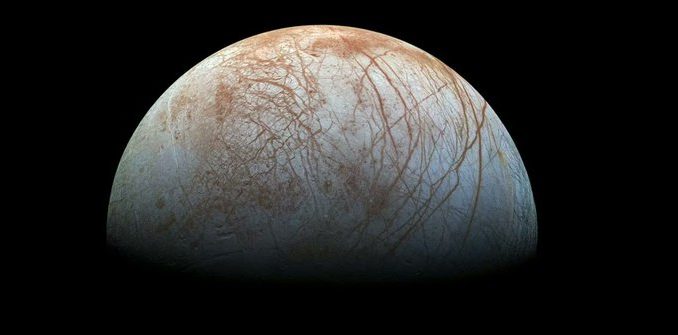
Nasa has recently announced US$600,000 (£495,000) in funding for a study into the feasibility of sending swarms of miniature swimming robots (known as independent micro-swimmers) to explore oceans beneath the icy shells of our Solar System’s many “ocean worlds”. But don’t imagine metal humanoids swimming frog-like underwater. They will probably be simple, triangular wedges.
Pluto is one example of a likely ocean world. But the worlds with oceans nearest to the surface, making them the most accessible, are Europa, a moon of Jupiter, and Enceladus, a moon of Saturn.
These oceans are of interest to scientists not just because they contain so much liquid water (Europa’s ocean probably has about twice as much water as the whole of Earth’s oceans), but because chemical interactions between rock and the ocean water could support life. In fact, the environment in these oceans may be very similar to that on Earth at the time life began.
These are environments where water that has seeped into the rock of the ocean floor becomes hot and chemically enriched – water that is then expelled back into the ocean. Microbes can feed off this chemical energy, and can in turn be eaten by larger organisms. No sunlight or atmosphere is actually needed. Many warm, rocky structures of this sort, known as “hydrothermal vents”, have been documented on Earth’s ocean floors since they were discovered in 1977. In these locations, the local food web is indeed supported by chemosynthesis (energy from chemical reactions) rather than photosynthesis (energy from sunlight).
